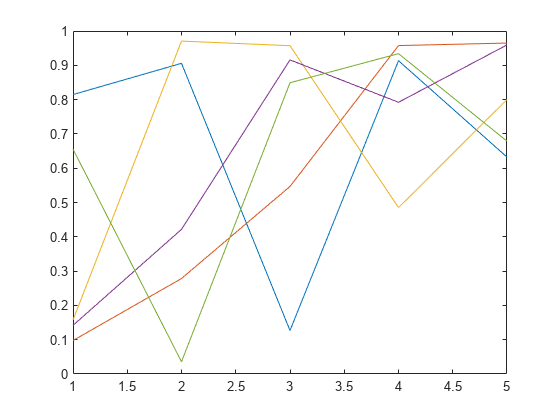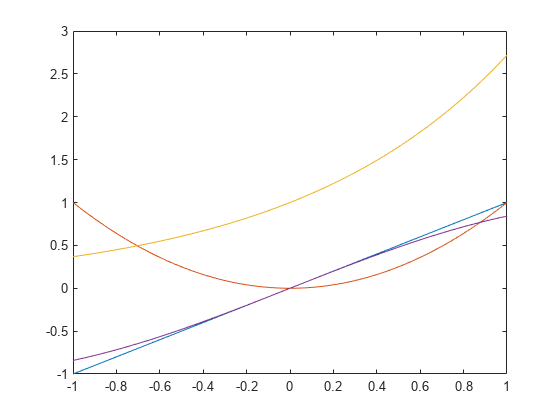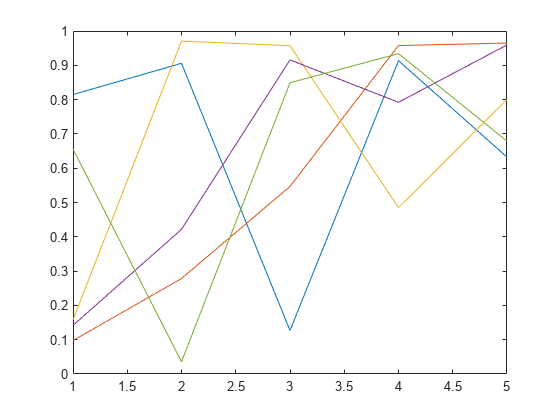findobj
固有のプロパティをもつグラフィックス オブジェクトの検索
構文
説明
h = findobj は、グラフィックス ルート オブジェクトおよびそのすべての子孫を返します。
h = findobj( は、指定したプロパティが指定した値に設定されている階層内のすべてのオブジェクトを返します。prop1,value1,...,propN,valueN)prop,value のペアを、前述の構文からの他の入力引数の組み合わせで置き換えることができます。たとえば、h = findobj(prop1,value1,'-not',prop2,value2,'-property',prop3) は次の 3 つの条件を満たすオブジェクトをすべて返します。
オブジェクトに
value1に設定されたプロパティprop1がある。オブジェクトに値が
value2に設定されていないプロパティprop2がある。オブジェクトにプロパティ
prop3がある。
h = findobj( は、objhandles,___) objhandles にリストされているオブジェクトと、そのすべての子孫に検索を制限します。前述の任意の構文に対して検索を制限できます。
h = findobj( は、objhandles,'-depth',d,___)objhandles にリストされているオブジェクトと、グラフィックス オブジェクト階層内で d レベル下までのその子孫に検索を制限します。
h = findobj( は objhandles,'flat',___) objhandles のみにリストされているオブジェクトに検索を制限します。子孫オブジェクトは検索されません。'flat' オプションの使用は d = 0 を指定した '-depth' オプションを使用するのと同じです。
例
入力引数
ヒント
あるオブジェクトで
HandleVisibilityプロパティが'off'に設定されている場合、findobjはそのグラフィックス オブジェクトやその子孫を返しません。非表示のオブジェクトを含め、階層内のすべてのオブジェクトを返すには、関数findallを使用します。関数
findobjは、すべての正しいプロパティ値に正確に一致するオブジェクトを検索します。たとえば、このコードはColorプロパティがred、r、または[1 0 0]に設定されたすべてのオブジェクトを検索します。findobj('Color','r')
グラフィックス オブジェクトが、
objhandlesで識別される複数のオブジェクトの子孫である場合、関数findobjがそのハンドルを検出するたびに MATLAB によってオブジェクトが検索されます。そのため、グラフィックス オブジェクトへの暗黙的な参照では、オブジェクトが複数回返される可能性があります。
バージョン履歴
R2006a より前に導入









